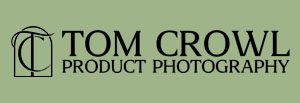Product photos can make or break an e-commerce store. As a photographer who takes product images for retailers and wholesalers, I often hear:
• What types of product images are good?
• What is the best size for e-commerce product images?
• Can I use product images on my website?
• Can I use free images for an e-commerce website?
• What type of license do I need for product photography?
And the list could go on.
In this article I’m going to share some of the best practices for e-commerce product images. Over the next few weeks I will be elaborating on this to answer all of your e-commerce product image questions. If you don’t find the answers in this series, you can e-mail me and I will answer it here on my product photography blog.
This week we will start with:
What kind of e-commerce product images do I need?
Every product category is different, but there are some things most e-commerce products have in common.
1. White Background Product Images:
The product photographed against a white background is the basis for most e-commerce websites. These are used on search result pages, product pages, social media and in advertisements. Every e-commerce retailer or wholesaler should have these product images in their creative bank.
2. Lifestyle Product Images:
These are photos of your product interacting or with other things. Those “things” may be other products from a collection or in the proper setting for the product. Lifestyle images set a mood and add context to your product. They allow consumers to imagine how the product would look or feel in their life. These make good “Hero” shots for e-commerce retailers to use in their on-line stores.
3. Action Product Images:
Action product images show the product in use. You may have a hand or model working or wearing the product. The product itself may be in motion. Action or process images create a lot of impact for consumers.
Additional types of e-commerce images
4. The Specialty Shot:
The specialty shot is one that stops the social media scroll or encourages the click through. I have a full gallery of Specialty Product Images on the site. You can click the link and it will open in a new browser tab so you can quickly come back here.
5. Detail Shots:
On-line, people can’t hold or inspect the quality of an item. Detail shots will allow consumers to see texture and the little nuances of an item that lead to confidence in purchasing.
6. On-Color Product Shots:
Similar to the white background e-commerce images, these feature your product on a colorful background. The color may be a shade of the product color, your brand colors or a complimentary color. They stand out as images on your website and social media. Some brave e-commerce stores use color background images in place of the white background to draw attention to a listing.
7. The Interactive Or 360º Product Image:
A 360º product image is actually a bunch of still images pieced together to create a smooth scrolling look at all sides of a product. These are especially useful if the product has a lot of features on all sides, like a backpack or camera.
The stills can either be combined to create a rotating GIF file or can be used with outside software to create an interactive scroll feature so a consumer may interact with it.
8. Infographics:
Depending on the product, an infographic may be an excellent way to point out features and benefits. More people will look at and read an infographic than will read a product description.
9. Stop Motion Animations:
Highly visual, stop motion animations are a great way to attract attention to your products. E-commerce retailers can make excellent use of these on social media to capture attention. Another type of stop motion animation is known as the cinemagraph, where most of the image is frozen except for one moving part. You can learn more about cinemagraphs here.
How many product images do I need for each listing?
The number of each style of product images will depend on your product and where you market it.
If you are selling a watch, you may want 6 or 7 images to show the full product from different angles and sides, detail shots of the watch and the band, etc.
If you are selling a set of earrings, you may on need 3 to 4 shots, a front shot, one forward and one to the side, a back shot to show the quality of the setting and possibly a lifestyle or action shot with a model putting the earrings on.
An infographic would be out of place for earrings, but if your product is a tool or a piece of furniture, dimensions and features would be perfect for them.
Planning Your Product Images
It is good step to set up a “Shot List” for each product. This allows you to make sure no image is missed when you take your own photos or hire a professional product photographer to do the job.
Next week I will cover the best size for e-commerce product images for your website and e-commerce platforms like Amazon and others.
If you’d like to discuss your e-commerce product image needs, I’d be happy to hop on a quick call to see if my services would be a match! Just fill out the form below, or text or email me using the contact info below.
Discover How Professional Photography Can Elevate Your Brand
Get a Custom Quote Tailored to Your Specific Needs

Take a minute to fill out the form below. Doing so will help me understand your product photography needs. Once I receive your information, I'll reach out to you personally to discuss the project in more detail and create a customized quote for you.
You may also text me at: 410-596-4127 or E-mail me at: tom@tomcrowl.com

